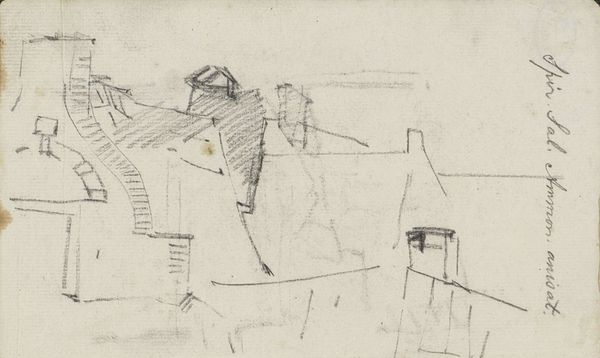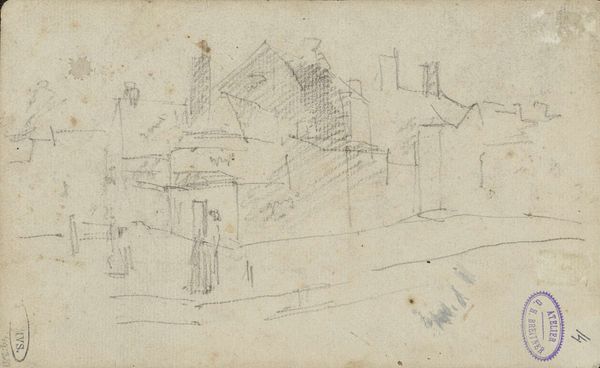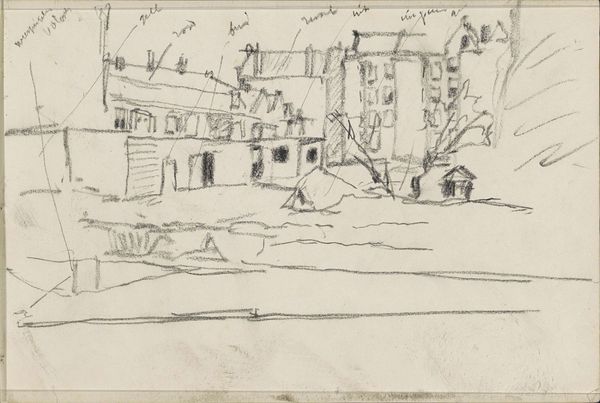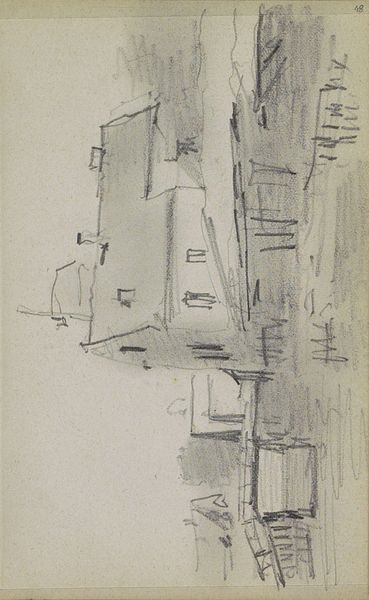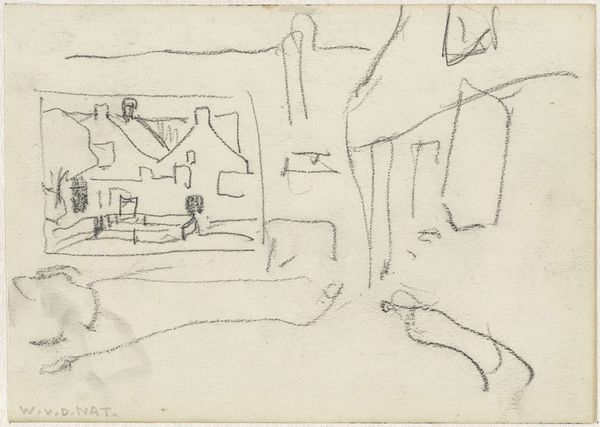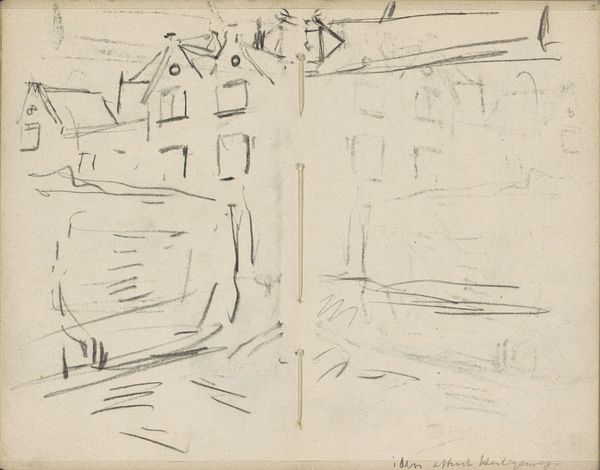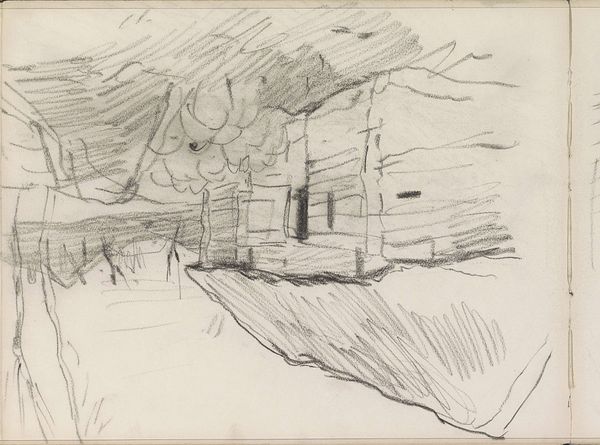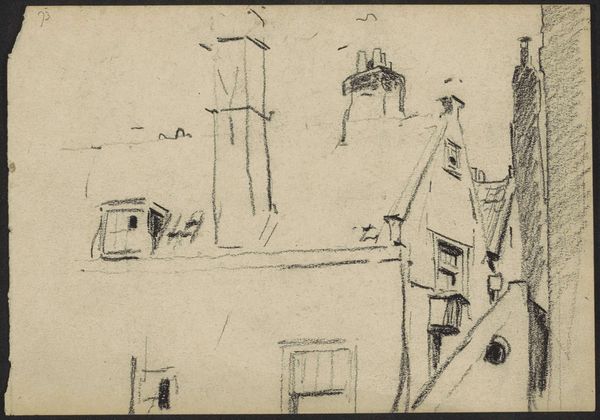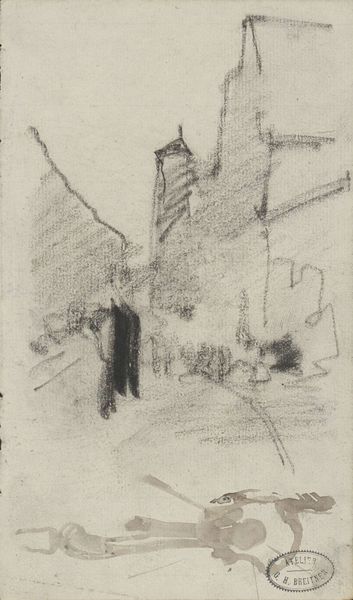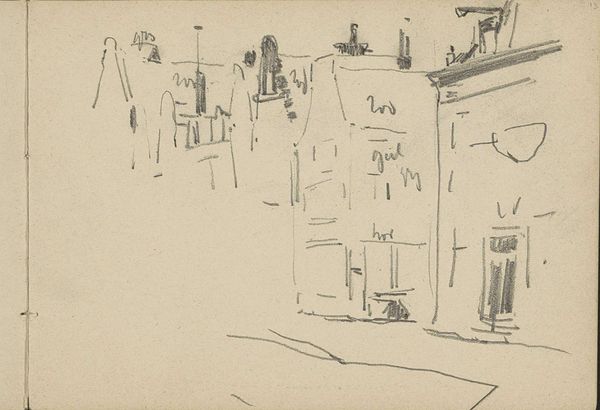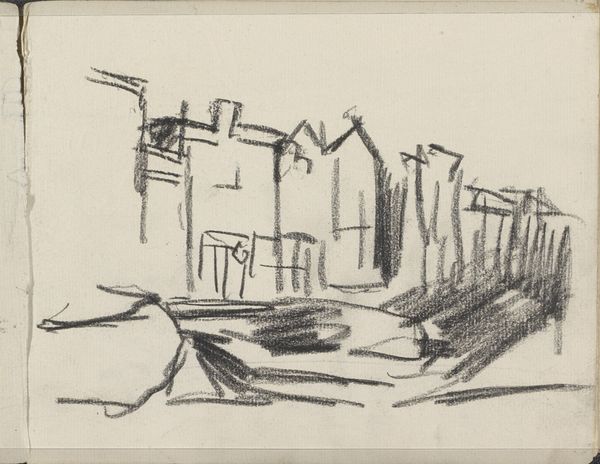
Dimensions: height 131 mm, width 202 mm
Copyright: Rijks Museum: Open Domain
Editor: Here we have George Hendrik Breitner's "Cityscape, possibly in Amsterdam," created sometime between 1886 and 1923. It's a pencil drawing, very evocative in its simplicity. I find it quite bleak, somehow. What do you see in this piece? Curator: I see the residue of rapid urban transformation, and a critique embedded within its seeming artlessness. Consider the era: Breitner was active during a period of intense industrialization and social upheaval in Amsterdam. The sketch, with its almost brutal directness, avoids romanticizing the city. Editor: Brutal directness, that's a great way of putting it. How does that relate to the social upheaval? Curator: The quick, almost frantic lines speak to the speed and disruptive nature of urban change, particularly its impact on working-class communities. This wasn't a period of uniformly positive progress; for many, it meant displacement and alienation. Does the artist provide an answer, or does he show how lost inhabitants become through their struggles to resist the forces of social engineering that attempt to erase the presence and experiences of city inhabitants. Editor: I see what you mean. It's not a picturesque view; it's almost confrontational. It feels…unfinished. Curator: Exactly. That "unfinished" quality disrupts traditional notions of beauty and finish and can be interpreted as Breitner refusing to beautify a process—urban development—that had devastating social costs. What is the ethical responsibility of the artist in representing such rapid transformations? Is neutrality even possible, or does the act of observation inherently take a position? Editor: I hadn’t thought about it like that. It’s like the drawing itself is a form of protest. Curator: Precisely. It asks us to confront the uncomfortable realities beneath the surface of progress, challenging viewers to engage critically with the spaces they inhabit. How much of what has come down through History actually represents historical and social contexts truthfully. Editor: It gives me a lot to think about. Thanks! Curator: Likewise, every viewing allows us a re-viewing that provides more insight each time.
Comments
No comments
Be the first to comment and join the conversation on the ultimate creative platform.
